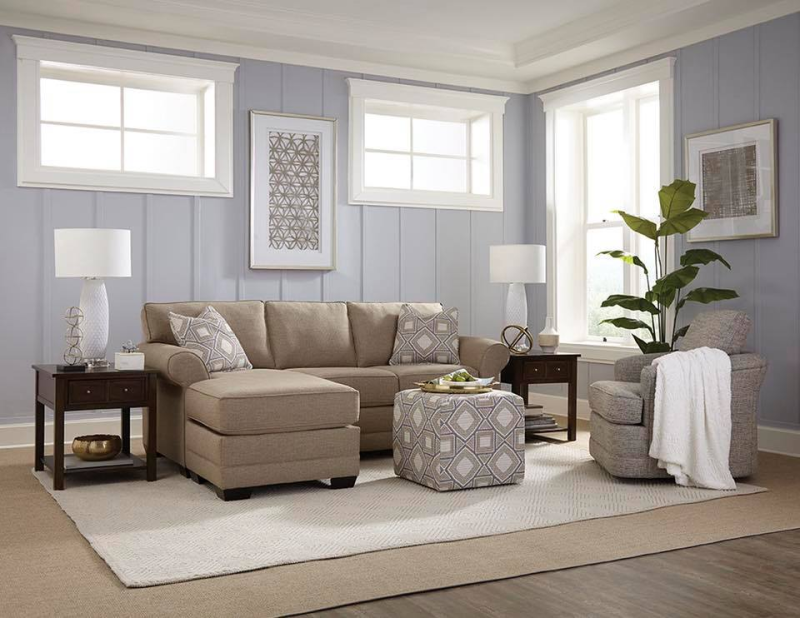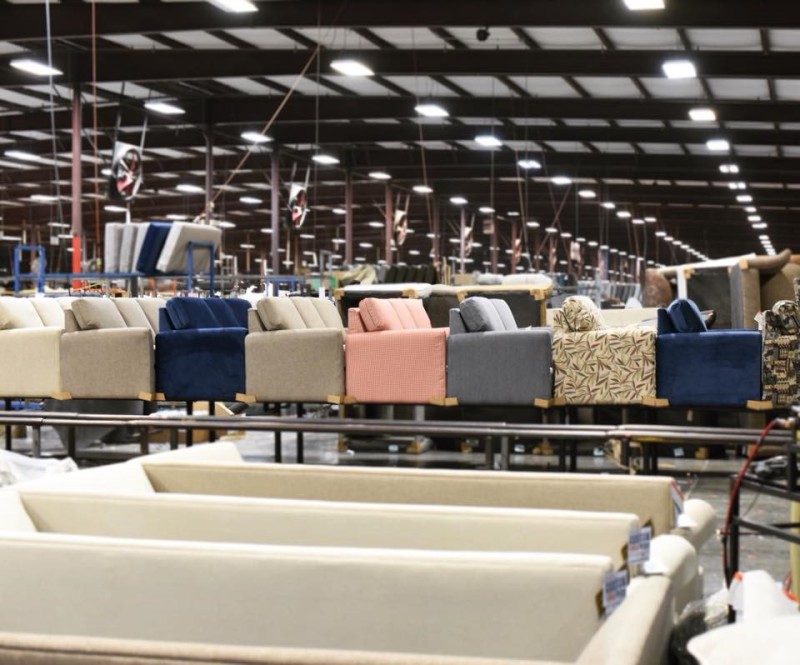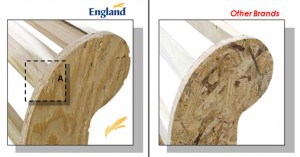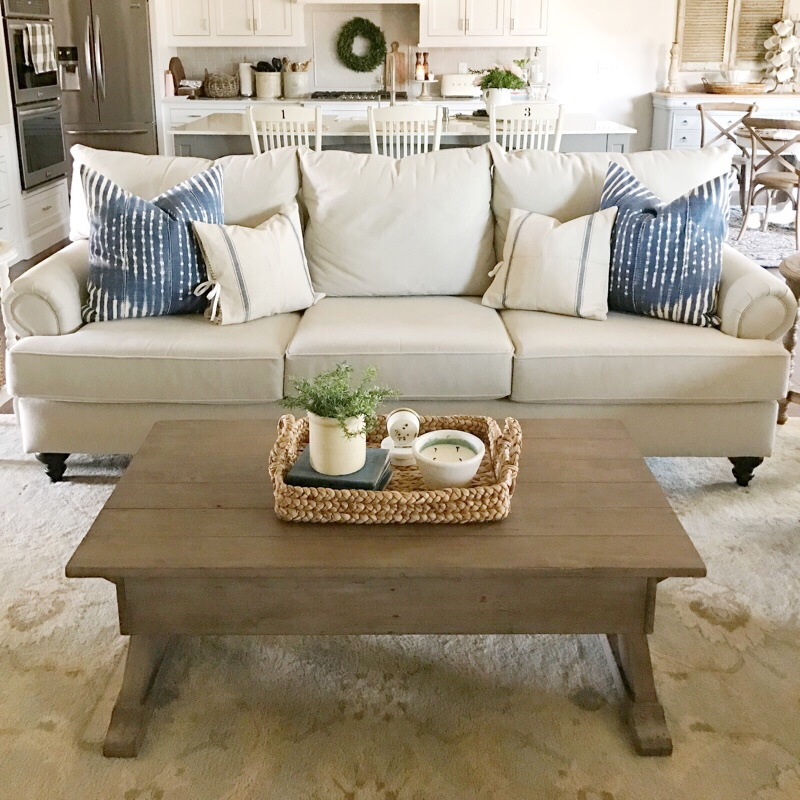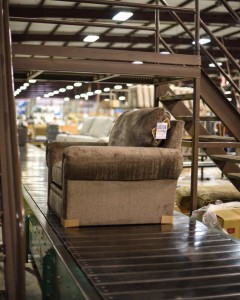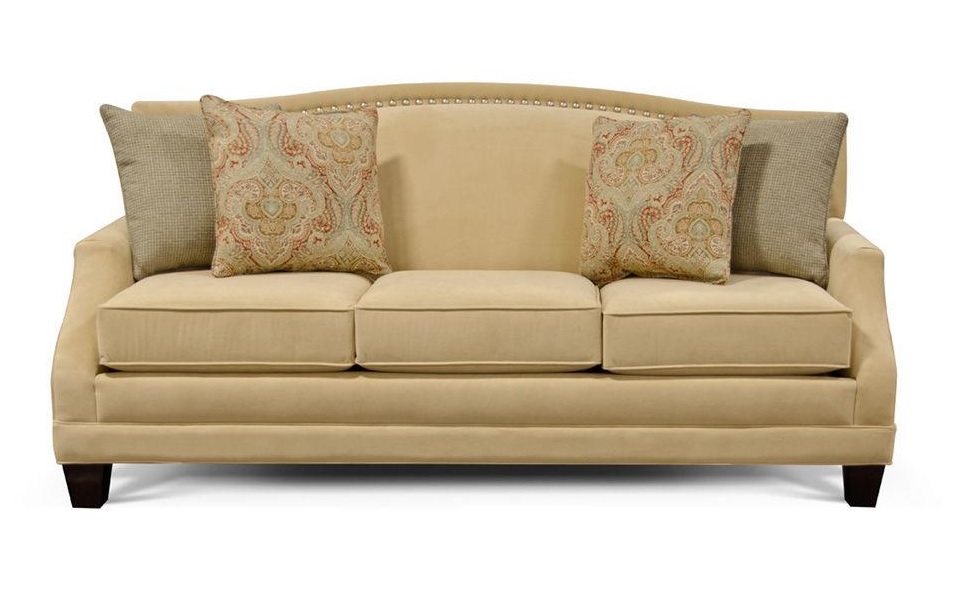Wrapping a sofa bed for moving with moving blankets requires some skill and experience. Sofas, and especially sofa-beds, are bulky and heavy furniture. If you do not have experience, wrapping a sofa bed with moving blankets it is probably better left for professional household movers on the move day. On the other hand, a Quilted Sofa Cover can easily be used for moving a couch, and then reused to cover a sofa for long term storage, protection from dirt, dust, pet claws, fading from sun exposure, etc. Regular sofas normally do not present much of a challenge, because even though they are large – they are light-weight, but a large heavy sofa-bed might cause you trouble on the move day.
Before you attempt to move your sofa:
Before wrapping a sofabed (“hide-a-bed” couch) for moving, make sure that the sofa can fit through the doors and can be safely moved out and brought into your new home. Try to remember if the sofa bed was moved in as one piece or if it was assembled inside. Was there any remodeling done, that might have narrowed the hallway?
If you think that the sofa would not fit through the door, call the original store or sofa-bed manufacturer and see if they can come and disassemble it for you and then reassemble in the new place. This service might cost around $175.00 and it is well worth it.
Bear in mind that the blanket wrap will add an inch or two to the dimensions of your sofa and this can make a big difference. Sometimes it is better to just move the sofa out as is and then wrap it in the moving truck. Most of the time experienced movers can maneuver the sofa-bed out by skillfully rotating it around the corners and carrying it through doorways just at the right angle. But that is not always the case and forcing the sofa through a tight spot is the recipe for moving damage, which can be done to the sofa itself or to the walls and doors of your home.
Prepare sofa-bed for wrapping:
So how to wrap the sofa bed correctly as professional movers do?
First, inspect your sofa-bed. Some are constructed with solid padded sections under the fabric, in others the fabric is stretched over a hollow frame.
NOTE: if the sofa-bed with hollow frame is incorrectly laid on its back on a moving dolly, the frame may crack under the weight of the sofa-bed. Also, if you load anything heavy on or against one of these hollow sections – the fabric might deform permanently and this will damage the sofa.
Take cushions off the sofa. You want to make the sofa as light as possible, especially if you have to carry it up or down the stairs. Place the cushions in a wardrobe box or tie up together by a strap or rope facing each other.
To avoid wrinkling of the “Skirt” of a couch – lift the skirting and rubber band it loosely against the fabric. (NOTE: very tight rubber band or tape can leave an impression or dent in naugahyde and velvet finishes.)
Next, if this is a sofa bed – tie up the bed frame to the sofa frame. You can use any type of packing rope, moving strap, or make a tie up out of a packing tape.
Cover sofa with moving blankets.
Now it is time to start wrapping. It takes 4 moving blankets of regular size (72 x 80 inches) to cover a sofa bed.
Move the sofa away from the wall so you can walk around it. Place the first blanket to cover the front down to the floor (allow enough to go under the bottom) and just to fold over the back.
Place the second blanket to cover the back. Make sure to allow enough blanket to cover the bottom under the sofa and somewhat overlap over the front blanket.
Now place one blanket on each side, making sure it covers the sides and the back and front corners and has enough to go under the bottom. These moving blankets would overlap the front and back blankets. At this point your sofa should be completely covered in blankets.
To secure the moving blankets on the sofa you can use rubber bands or tape.
NOTE: If you are wrapping sofa in the moving truck or it is possible to just roll it out on a moving dolly – rubber bands would suffice. But if you are planning to maneuver the sofa-bed through the doorway or move the couch down the stairs, you have to use packing tape. Rubber bands do not provide sufficient hold and blankets can slip off the sofa. Mover would have no “grip” on the sofa to carry it.
Securing moving blankets on the Sofa.
Start taping the blankets on sofa in the middle (vertical), somewhere half the total height of the sofa and then go along the seating area from side to side. Starting just under the armrests and going along the frame right under the seat from one side to the other. Make sure to tuck and fold loose corners of the blanket neatly around the corners of the sofa and catch them with tape, so they cover the sofa sides and corners properly and do not hang loose. This will hold all four blankets in position. Go around over the same layer of tape at least 4 -5 times. This will provide strong support for carrying the sofa.
Next, roll the tape around the armrests to secure side blankets in place then, go along the back of sofa. At this point you should have the blankets secured the long way.
Now stand the sofa up on its side and wrap across in at least three sections: right over the armrests, and in the middle. For very long sofas make two midsection bands to catch the edges of the side blankets. Fold the excess of the moving blankets over the bottom. (There is no need to cover the whole bottom, unless you want to, but it is important to cover the corners.) Remove the legs, if removable. If legs cannot be removed – wrap and tape the moving blanket around the legs of the sofa-bed. Flip the sofa and do the same for the other side.
Now your sofa-bed is wrapped and ready to go.
How to wrap a sofa bed using a sofa cover.
If wrapping sofa bed with moving blankets sounds like a lot of work – get a quilted sofa cover. Quilted sofa covers are made out of the same premium quilted moving blanket material and have three tie ups at the bottom.
The whole process becomes very simple: cover the sofa with a sofa cover, stand it up on its side, or lay on the back and tie the tie ups together.
Tips:
1 – if you have a light colored upholstered sofa – place a plastic sofa cover first before wrapping with moving blankets.
2 – to make a tie out of a packing tape – unroll as much tape as you can with your arms stretched. Then fold it sticky surface in. Squeeze the tape so it sticks to itself – now you can tie up your sofa bed frame securely.
3 – if you have a leather sofa – use cardboard corners to protect the edges and corners of the sofa.
4 – Do not put sofa on blankets, put moving blankets on sofa! You might have seen recommendation to put blankets on the floor first and then put sofa on top of the blanket to wrap it. Doing it this way is very inefficient, labor intensive and time consuming. (Time is money, especially when you hire movers. And in this case what is good for mover is not necessarily good for you). This method requires additional floor space to lay down blankets, while the sofa is still occupying its own space. Then you need a helper to put the sofa on the blanket and to keep the falling ends of the blanket up when you try to tape them. And last, but not least the sofa bed legs (if not removed) will create holes and destroy the blanket when the sofa is pushed around in the moving truck.
For detailed instructions on how to wrap a sofa bed for moving with moving blankets, or if you need to get moving supplies, go to http://www.MoversSupplies.com.
If Wrapping sofa bed with moving blankets sounds like a lot of work – get a quilted sofa cover.
Article Source: http://ezinearticles.com/?How-to-Wrap-a-Sofa-Bed-for-Moving-and-Storage-With-Moving-Blankets&id=6372295
Join the England Furniture community on Facebook!


